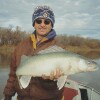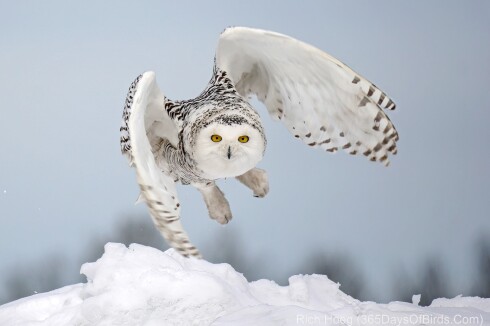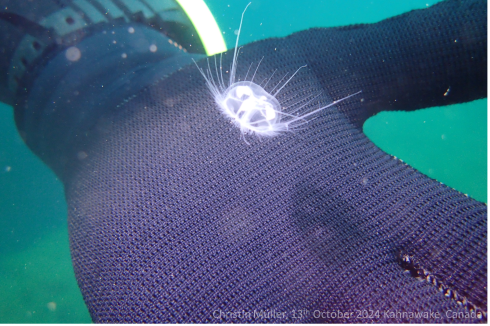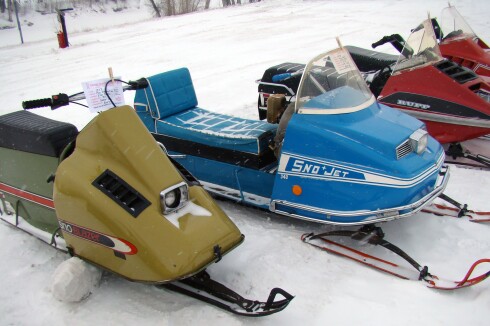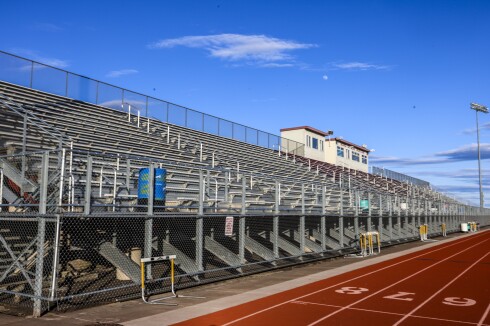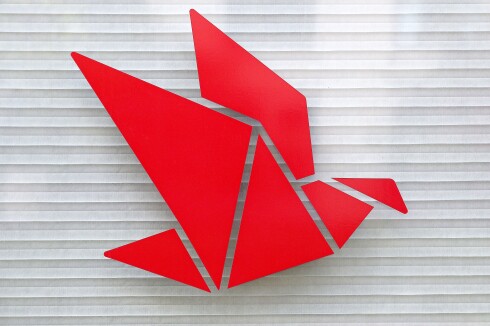Lack of ice isn’t a problem this winter on Lake Winnipeg, but U.S. anglers who venture north in pursuit of the big lake’s famed “greenback” walleyes should be prepared for cracks and pressure ridges that have formed because of fluctuating temperatures.
So says Rick Gergatz, administrator of the Lake Winnipeg Report Facebook page.
ADVERTISEMENT

“The lake, like every year, has got some issues with ice formation,” said Gergatz, of Stonewall Manitoba. “We’ve got some cracks and pressure ridges and not a whole lot of snow cover – not yet, anyway – and it’s making for challenging access.”
Unlike popular Minnesota fisheries such as Lake of the Woods and Upper Red Lake, there is no plowed and maintained ice road system on Lake Winnipeg. Because of that, anglers who venture onto the lake with trucks and SUVs can face some treacherous conditions.
Fluctuating temperatures, which have been the norm this winter, cause the ice to expand and contract. Gergatz posts detailed reports twice a week – once for the weekend and once during the week. Anglers fishing the lake also post reports – or requests for help.
“This isn’t a little prairie pothole lake – it’s 18 miles across at the south basin,” Gergatz said. “Ice is like any other solid, it expands when it warms and it contracts when it gets colder.”
That’s when problems occur.
“We’ve got contraction cracks, the ice is opening up so guys are dropping their wheels (into the cracks), that type of thing,” Gergatz said. “Or, with the cold weather now, they’re fishing all day, they go to start the truck and it doesn’t start, whether the battery was low and they didn’t realize it or they don’t have a booster kit, it’s getting dark and they’re in the middle of the lake.”
Even if you’re prepared, Gergatz says, things can go wrong.
ADVERTISEMENT
“The guys that are coming up, for some of them it’s their first time up here, and they’re used to driving on maintained (ice) roads,” Gergatz said. “We don’t have that here – there’s nothing. It’s nature’s product out there.”
Occasionally, cracks in the ice will be marked “with a board sticking up or that type of thing,” he says, but anglers really need to be aware of where they’re traveling. The mouth of the Red River, for example, is a popular spot for anglers to set up, but that’s 8 to 10 miles from access points on either the west or east sides of the lake.
“You’ve got to navigate all the pressure ridges, all the cracks, all the rough ice that might be out there and nothing’s marked,” Gergatz said. “If you get a little bit of snow or the wind picks up, you can’t see a thing, so people have got to be prepared.”
More anglers also are hauling their deluxe wheelhouses up to Lake Winnipeg, he says, which creates a whole other set of problems and challenges.
“We’ve got no (ice) roads up here, so you’re dragging the wheelhouse through the worst of the stuff just to get to your fishing spot,” Gergatz said. “They think they’re going to park right at the mouth and go fishing there. Well, you’ve got 8 to 10 miles of lake to navigate, and it’s not marked – it’s nothing.”
For anyone bringing up a wheelhouse, Gergatz says the best plan is to access the lake at one of the popular launch points, set up closer to shore and then use it as a base camp.
“You can still fish there early in the morning and at night because (the greenbacks) typically are shallow during those times,” he said. “And then during the day, you can venture out and run-and-gun if conditions allow.
ADVERTISEMENT
“But to drag the (wheelhouses) out miles on the lake is not a good idea.”
During the blizzard that hit Friday, Jan. 17, an angler camping on the ice didn’t get off the lake early enough to avoid the storm and whiteout conditions that resulted.
“It’s a whiteout – we couldn’t even see – so he had to hang tight until we could get to him at about 1 or 2 o’clock in the afternoon,” Gergatz said. “So, help isn’t minutes away, it’s hours away – it can be.”
Given the the abundance of rough ice and the cracks and pressure ridges that can form in fluctuating temperatures, Gergatz says snowmobiles or other vehicles with tracks are the best option.
“Tracks are the best way to do it – by far,” he said. “You can get to places where nobody else can get to. You can climb some of the smaller (pressure) ridges, that type of thing, and get across without too much issue.
“But with the wheels, you’re limited and there’s a lot of things that can go wrong.”


